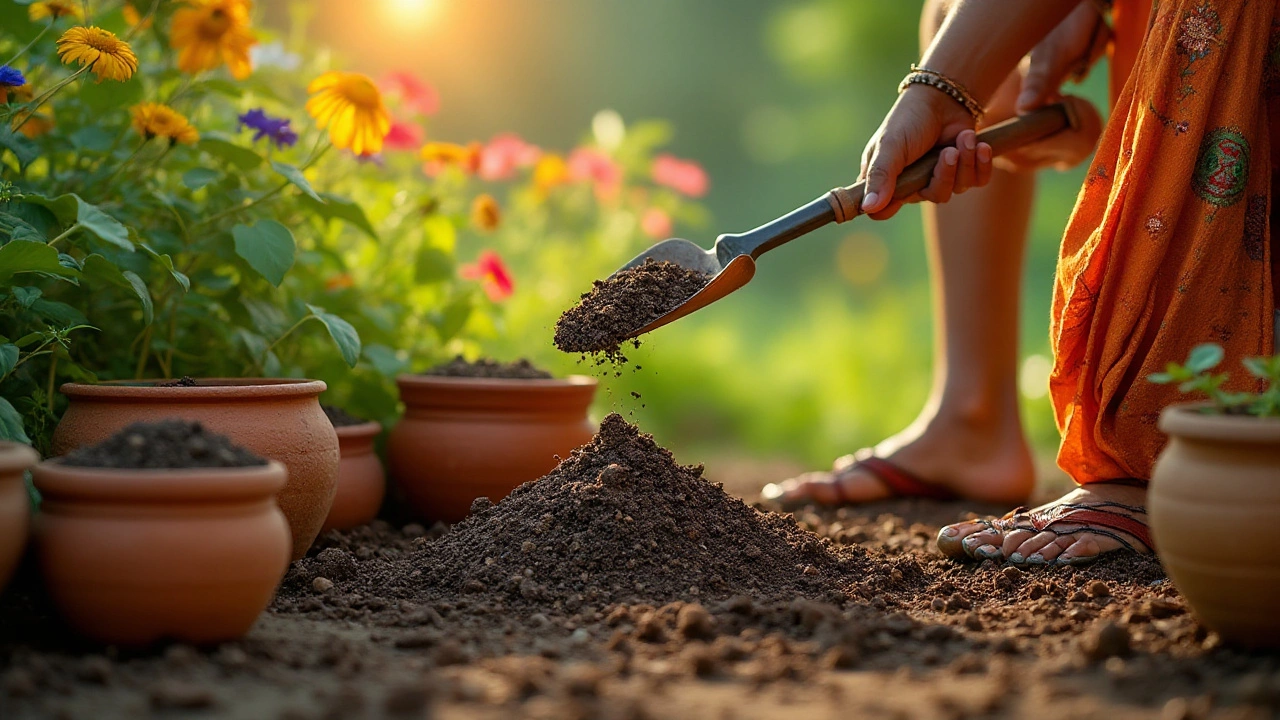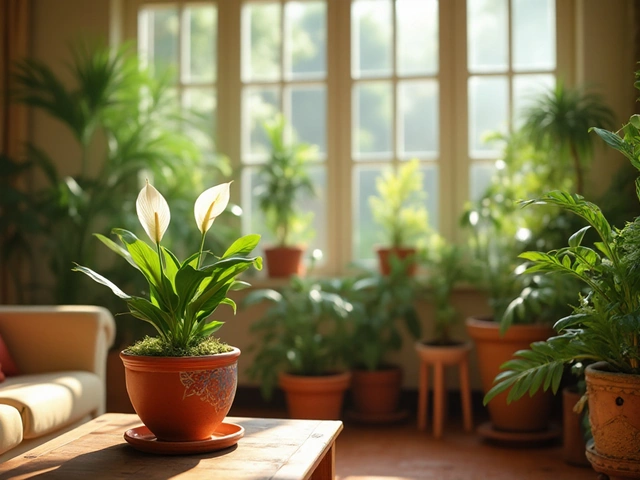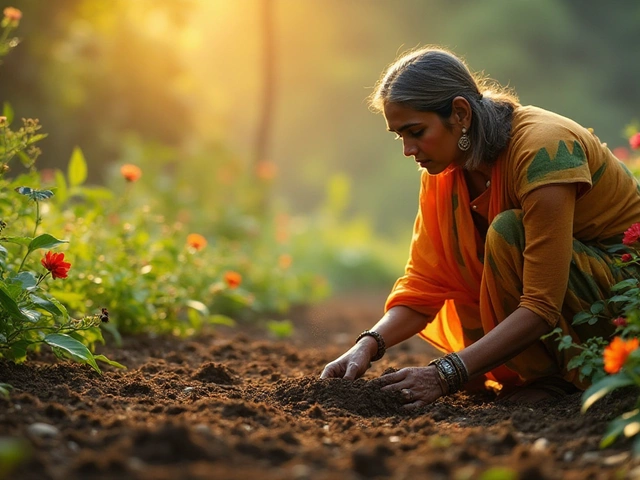Compacted soil poses a real challenge for gardeners, as it can stunt plant growth and lead to poor drainage. The good news? You don't have to break your back tilling to fix it. With a few clever techniques and the right tools, you can breathe life back into your soil without turning it upside down.
This isn't just a guide for the pros—it's for anyone who wants to nurture a garden that's both bountiful and sustainable. From understanding why soil gets compacted in the first place to learning how simple changes can make a big difference, there's plenty to explore. Let's dig into some no-till strategies that promise to transform your garden into a lush paradise.
- Understanding Soil Compaction
- Traditional vs. No-Till Methods
- The Power of Organic Matter
- Smart Use of Mulch
- Plant Roots as Natural Aerators
- Choosing the Right Garden Tools
Understanding Soil Compaction
Soil compaction is one of those subtle challenges that can make or break your gardening efforts. When soil particles are pressed together, either by natural forces or human activity, they lose their pore space. This limits the soil's ability to hold water, nutrients, and air—three crucial elements that plants depend on. The roots need room to breathe and grow, and compacted soil stifles that growth, leading to weaker plants and reduced yields.
Various factors contribute to soil compaction. It often begins with heavy foot traffic or machinery that presses down on the soil surface. Even regular garden activities, like walking or wheeling carts, can contribute to this compression over time. Rain might exacerbate the problem, particularly if the garden is overexposed to downpours. One telling sign of compacted soil is water pooling on the surface after a rain because the ground is too dense for water to penetrate.
An often-overlooked cause is the lack of organic matter, which helps maintain a loose soil structure. Soil rich in organics acts like a sponge, absorbing and retaining moisture while keeping the soil fluffy, which is ideal for plant roots. Without enough organic material, soil particles stick closer together, increasing the risk of compaction. Adding compost, leaf litter, or manure can gradually rebuild the soil's structure and alleviate compaction issues.
"The health of soil is a true measure of sustainability." - Wendell Berry
It’s critical to recognize that not all soil types compact equally. Clay soils are especially prone to compaction due to their fine particle size. These particles are naturally sticky and bond tightly under pressure. Sandy soils, in contrast, are less likely to compact because their larger particles don’t cling as tightly. However, they can still suffer if subjected to excessive force without adequate organic matter. Identifying your soil type can help tailor your approach to managing compaction effectively.
| Soil Type | Compaction Risk |
|---|---|
| Clay | High |
| Sandy | Low |
| Loam | Moderate |
Compaction doesn’t just hurt plants; it harms ecosystems. Decreased infiltration affects water cycles, leading to runoff and even soil erosion. This phenomenon reduces biodiversity by limiting the habitat available to soil organisms like earthworms, which play a role in aeration naturally. These creatures need loose soil to move through, and their activity perpetuates soil health, creating channels that improve structure and drainage.
Traditional vs. No-Till Methods
For years, gardeners have relied on the traditional tilling method to prepare their soil for planting. Tilling involves turning over the soil to mix in organic matter, aerate the soil, and break up any clumps. On the surface, it sounds like an effective way to combat soil compaction, but it can actually cause unintended harm over time. Regular tilling disrupts the natural structure of the soil, leading to long-term compaction as the top layer becomes loose and the lower layers become densely packed. This can hinder water infiltration and root penetration, ultimately impacting the health of your plants.
It's also noteworthy that tilling can lead to the destruction of beneficial soil organisms—such as earthworms and mycorrhizal fungi—which play crucial roles in nutrient cycling and soil fertility. These organisms create a thriving ecosystem beneath our feet that tilling can easily disrupt. Moreover, frequent tilling can contribute to erosion by removing protective plant cover, leaving the soil exposed to wind and water forces. As a result, gardeners and farmers have increasingly turned their attention to no-till methods as a more sustainable alternative.
No-till gardening, by contrast, seeks to preserve the soil structure and its inhabitant life forms. Instead of mechanically disturbing the soil, it relies on nature's methods to maintain soil health. One of the most popular techniques involves using mulches to cover the soil surface, which can suppress weeds, conserve moisture, and gradually add organic matter as it decomposes. By avoiding tillage, the soil below remains intact and continues to develop a porous structure that allows air and water to move freely, aiding in root growth and the regeneration of soil health.
Adopting a no-till approach brings with it a host of environmental benefits. It supports a richer population of soil microbes, reduces fuel and equipment costs, and diminishes the carbon footprint by decreasing the need for heavy machinery. A study by the United States Department of Agriculture found that no-till methods can reduce soil erosion by as much as 90% compared to traditional tillage.
"Embracing no-till methods helps us farm like nature intended," says a prominent soil scientist, emphasizing the holistic benefits of this approach.
While it may require a shift in mindset from the traditional way of working the land, no-till gardening can ultimately lead to a more sustainable, bountiful harvest. The success of this method largely depends on proper planning and commitment, as it involves carefully selecting appropriate cover crops, managing residues, and utilizing the right garden tools. By harnessing the natural processes and respecting the delicate balance of the soil ecosystem, gardeners can ensure their plots remain productive for years to come. Transitioning away from conventional tillage practices may take some getting used to, but it's an investment for a healthier planet and more robust gardens.
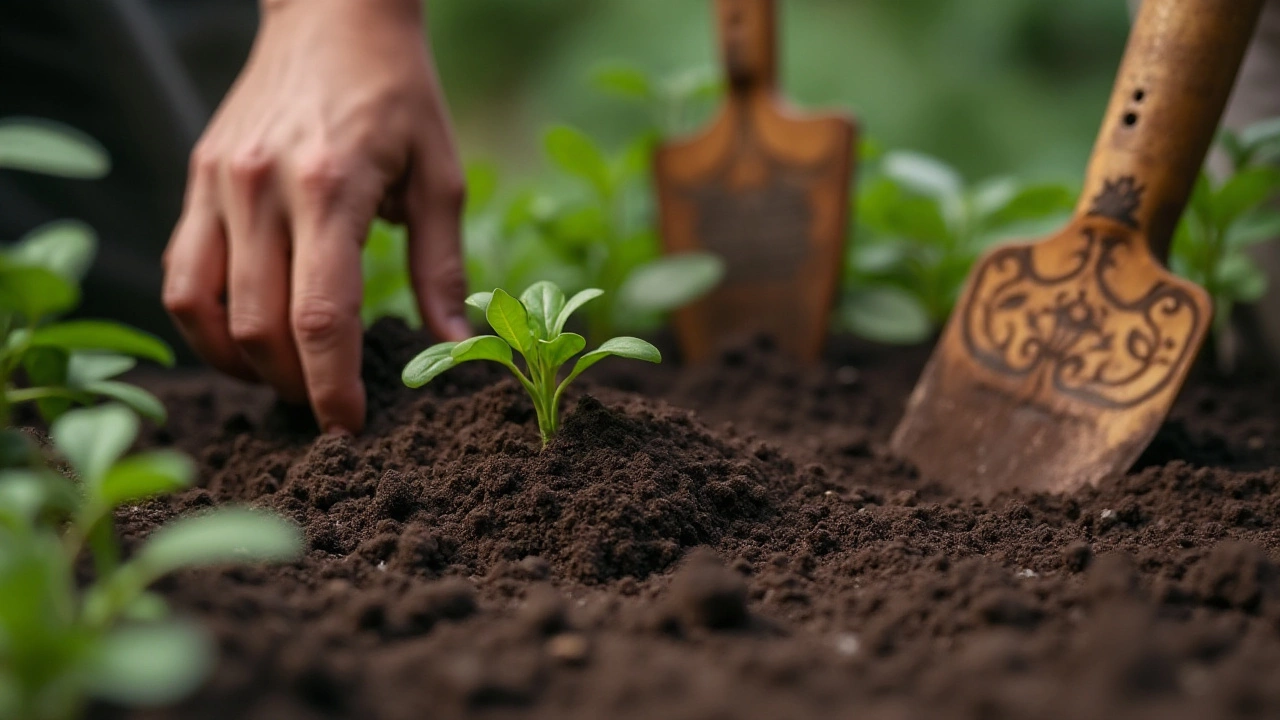
The Power of Organic Matter
When it comes to nurturing healthy soil, there's hardly anything mightier than organic matter. Imagine soil as a living organism, teeming with billions of microorganisms that work tirelessly to break down materials, release nutrients, and improve soil structure. Adding organic matter to your garden is like sending a wave of delicacies their way. This dynamic action initiates a chain of beneficial effects that can alleviate soil compaction without the need for aggressive tilling practices. The infusion of organic matter loosens up tightly packed particles, enhancing aeration and allowing water to percolate efficiently. It's as though you've given your soil a chance to stretch and breathe in an unencumbered manner.
One of the foremost ways organic matter alleviates compaction is through the creation of humus. When decomposing plant and animal materials converge into humus, it acts as a binding agent that clumps soil particles into aggregates. These aggregates foster vital pore spaces for root growth, water movement, and air infiltration. The increased porosity ultimately leads to a more resilient and vibrant garden. Studies have demonstrated that incorporating organic matter can improve soil structure within mere months. Humus significantly enhances the soil's ability to hold onto water and nutrients, making it a pivotal component of sustainable gardening practices.
Choosing the Right Organic Materials
Gardeners knock on the doors of various organic materials to unlock the simple yet potent mechanism of improving soil health. Leaf mold, compost, and well-rotted manure are popular choices, each with its unique benefits. Leaf mold, for example, is a slow decomposer but effective in adding lightness and drainage to clay-heavy soils. On the other hand, compost can earn its title as a gardener's black gold. Rich in a balanced array of nutrients, it enriches the soil and acts as a healing balm for compacted areas. Well-rotted manure is another staple, renowned for its incomparable ability to bolster soil fertility. To get started, simply work these organic goodies into the top few inches of the garden, allowing nature and its inhabitants to take care of the rest.
"There can be no other occupation like gardening in which, if you were to creep up behind someone at their work, you would find them smiling." - Mirabel Osler
Organic matter not only revives your soil physically but plays a role chemically and biologically as well. By feeding the multitude of soil organisms, you light the spark for a flourishing ecosystem beneath your feet. These microscopic allies return the favor by continuously improving soil conditions, helping convert organic nutrients into forms your plants can readily use. This symbiotic relationship underscores why organic matter is the cornerstone of a no-till gardening philosophy. As time passes, you'll witness how microfauna-driven activities help shape a garden teeming with productive vitality and resplendent with blooms and yield.
Data Behind the Process
| Material | Decomposition Time | Nutrient Contribution |
|---|---|---|
| Leaf Mold | 6-12 months | Low in nitrogen, excellent for structure |
| Compost | 2-6 months | Rich mix of nutrients, balanced NPK |
| Manure | 6-12 months | High in nitrogen and phosphorus |
Smart Use of Mulch
Mulching is a practice that can transform compacted soil into a breathing, thriving ecosystem without the need for tilling. By covering the soil surface with a layer of organic material, gardeners can protect the soil, conserve moisture, and significantly improve soil structure. The magic of mulch lies in its simplicity—using a range of materials like straw, wood chips, or shredded leaves can help loosen compacted soil over time by inviting beneficial earthworms and microbes to do the heavy lifting. As these creatures break down the mulch, they enhance biota activity, naturally aerating the soil and preventing further compaction.
To begin the mulching process, it’s essential to first clear the area of weeds or debris that might halt the effectiveness of the mulch. Once the soil is prepped, lay down a thick layer, about two to four inches, depending on the type of mulch, to ensure adequate coverage and effectiveness. A well-chosen mulch also insulates plant roots, keeping temperatures stable in extreme weather conditions. It acts like a protective blanket keeping the delicate underground environment stable while reducing the impact of foot traffic or heavy rains that can lead to compaction.
Mulch also enhances the soil's ability to retain critical organic matter, supplying nutrients over time as it breaks down. This slow-release mechanism is similar to feeding your plants a time-release vitamin, promoting a more vibrant and productive garden. A study published by the Soil Science Society of America Journal found that mulching could reduce surface soil compaction by 26% when applied regularly over three years. Now that’s something that hints at the power mulch holds in reshaping your garden’s future.
One of the most significant advantages of mulching is its role in minimizing erosion. By softening the effect of rain on the soil surface, mulch acts as a buffer that reduces runoff and keeps precious topsoil in place. A study in the Journal of Environmental Quality highlighted that mulch applications could reduce soil erosion by up to 86% compared to bare soil under heavy rainfall conditions. This makes it an invaluable ally in preserving the health and beauty of your garden, especially in areas prone to erosion.
Finally, the benefits of mulch don't end there. By stifling weeds, mulch reduces competition for nutrients and sunlight, allowing your desired plants to flourish unhampered. The impact goes beyond the aesthetic; it’s about creating an environment where the healthiest plants can thrive, letting gardeners focus on nurturing rather than relentlessly weeding. Gardeners often mistakenly overlook mulching as just a decorative touch, yet its long list of benefits is a testament to its pivotal role in a no-till garden strategy. As famed environmentalist Wendell Berry once said,
"The soil is the great connector of our lives, the source and destination of all." Mulch, in this regard, becomes the bridge that links our aspirations for a flourishing garden with the reality of soil health.
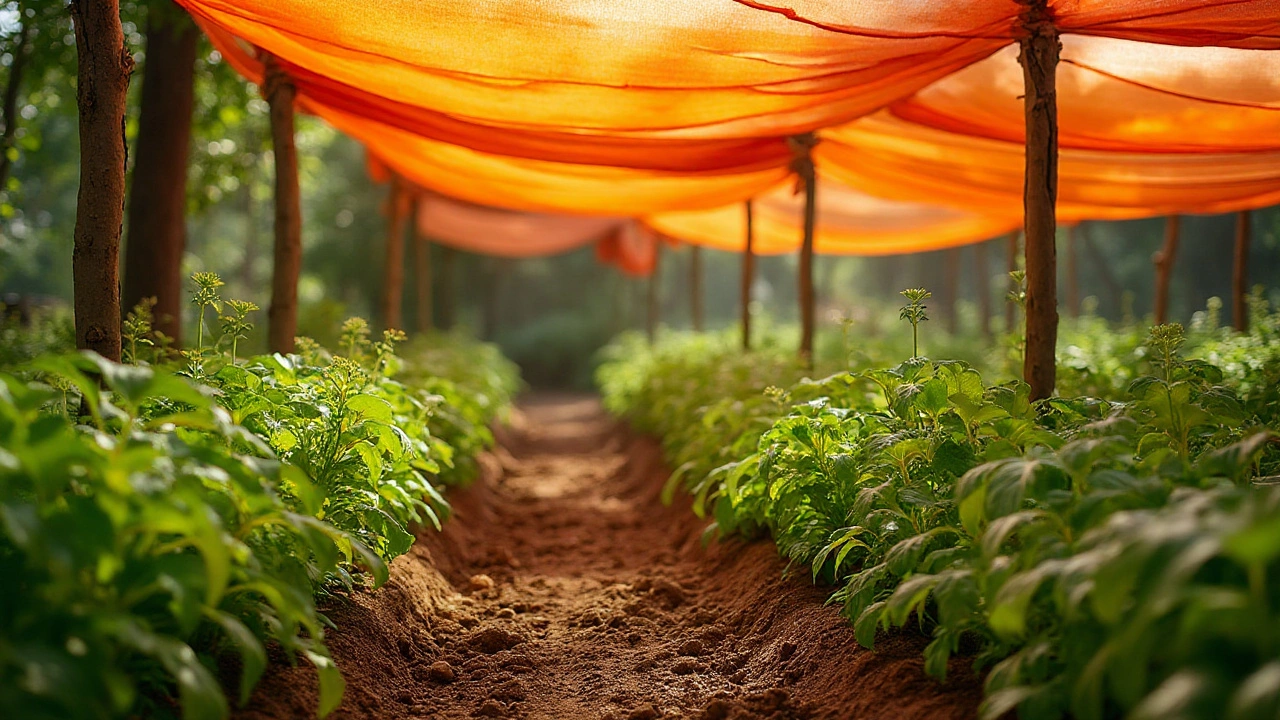
Plant Roots as Natural Aerators
Using plant roots as natural aerators is one of the most effective ways to combat soil compaction. It's a nature-friendly approach that utilizes the power of plants to break through dense earth, with their roots acting as living tools that create channels for air and water. As roots grow and push through the soil, they improve the structure, allowing essential nutrients and moisture to reach deep into the earth. This process not only enhances the physical condition of soil but also stimulates the activity of beneficial microbes, promoting a healthy ecosystem that benefits the entire garden.
Cover crops are particularly useful in this aspect. Varieties such as clover, vetch, and radishes, known for their ability to penetrate compacted layers, are excellent choices for this natural aeration process. Radishes, especially the daikon variety, are famous for their long taproots that can delve several feet below the surface. When these roots decay after the plant lifecycle, they leave behind organic matter and channels that aerate the soil. According to the USDA, using cover crops can enhance soil health significantly, improving water infiltration by as much as 40%.
"Roots are the secret superheroes of the underground world.", as noted in the Soil Science Society of America journal. They silently work to transform barren soil, bringing life back to the garden with every inch they grow.
An important advantage of employing this method is that it circumvents the need for disruptive tilling. Traditional tilling can destroy the natural soil structure and disturb beneficial organisms. Conversely, utilizing plant roots allows for a gradual improvement of the soil without this drawback. For best results, consider integrating a mix of shallow and deep-rooted plants. The diversity not only prevents compaction but also supplies different nutrients to the soil as the plants grow and decompose.
When planning your garden, it’s crucial to think about the root depth and growth rate of your chosen plants. Deep-rooted legumes, like alfalfa or peas, can fix nitrogen in the soil, making it more fertile over time. Shallow-rooted grasses, meanwhile, can cover large areas quickly to prevent erosion. This approach not only addresses compaction but also enriches the soil, creating a sustainable and resilient garden environment in which plants can thrive, reducing reliance on synthetic fertilizers.
In the broader picture, the practice of using natural plant roots as aerators contributes significantly to the health of your garden while reducing your ecological footprint. The integration of cover crops and strategic planting can lead to a more vibrant and productive garden. Remember, every garden is unique, so experimenting with different plant combinations will help you find what works best for your conditions. If handled wisely, your garden can become a self-regenerating system, teeming with life, and bringing joy each season.
Choosing the Right Garden Tools
When it comes to tackling the problem of compacted soil without tilling, the right tools are essential for success. Every gardener knows that having the appropriate equipment can make or break the garden experience, transforming strenuous tasks into manageable ones. The impressive variety of garden tools available today can help you work smarter, not harder, to improve your soil compaction and revive soil health.
One of the most effective tools for loosening compacted soil is the broadfork. Unlike traditional tillers, the broadfork gently aerates the soil without disturbing the lower layers, maintaining the natural soil structure. Its two long, sturdy handles provide incredible leverage, allowing you to easily insert the tines into the earth and rock back and forth to create space. Many gardeners swear by this tool's ability to make the soil fluffier and more pliable, fostering better root growth for plants.
Another valuable addition to your gardening toolkit is the garden fork. While similar to the broadfork, garden forks are generally more lightweight and designed for smaller areas. They're handy for breaking up crusty topsoil and mixing in organic matter to improve soil health. The long tines of a garden fork penetrate deeply, encouraging water and air to reach plant roots effectively. If you're tackling a slightly smaller plot, this tool will meet your needs admirably.
For those who prefer more technologically advanced options, the manual aerator can be a fantastic choice. A manual aerator works by driving hollow spikes into the ground to remove small cores of compacted soil, which increases circulation to plant roots. This easy-to-use tool is perfect for gardeners looking to give their lawns a breath of fresh air without disturbing earthworms and beneficial organisms living within the soil.
The garden tools you select can significantly influence your gardening outcomes. As renowned garden expert Monty Don once said, without the right tools, "you will be thwarted, exhausted, and disappointed by your garden."
"A good set of tools is an investment that can repay you with a lifetime of joyful, effortless gardening," he suggests. Investing in quality tools may seem steep at first, but over time, they often pay for themselves by way of increased efficiency and improved soil conditions.
Finally, it's worth considering the use of mulching tools. Mulching blades or rakes can help you spread layers of mulch evenly over your garden, contributing to soil protection and moisture retention. By combining this practice with the use of your new tools, you can ensure your soil remains healthy and compact-free. Remember, a garden is only as good as its foundation, and by selecting the appropriate tools, you are taking a substantial step toward creating a thriving environment for your plants.
